Australian Garden History, the Society’s journal, was first published in 1989. It has continued as it started, striving to maintain a dialogue between professional and amateur interests in the history of gardens, thus showcasing the many aspects of the landscape and its intersection with Australian life.
Media Releases
September 2025 - Gardens and memory
June 2025 - The importance of trees
March 2025 - Ways of seeing landscape
December 2024 - Garden transmissions
September 2024 - People and plants
July 2024 - Restoring and recording gardens
March 2024 - Lest we forget
December 2023 - Déjà vu: recurring themes in gardens and landscape history
September 2023 - Highlighting design
June 2023 - Celebrating camellias
March 2023 - From Gondwana to mid-20th century modern
January 2023 - The diverse histories of gardens
September 2022 - Knowing our landscape
June 2022 - Collating the past
March 2022 - The flow of ideas
6 January 2022 - Against the odds
20 September 2021 - Being seen to conserve
1 June 2021 - A picture is worth a thousand words
31 March 2021 - Dare to dream
5 January 2021 - Gardens are great
16 September 2020 - How gardens and landscape shape our identity
13 August 2020 - Gardens and their history offer solace during COVID-19
Indices of Journal Articles
The index to Australian Garden History makes it easy to find articles, gardens and other gems contained in volumes 1–20.
Compiled by AGHS member Kirstie McRobert, this comprehensive index covers issues of the Australian Garden History Journal from 1989-2009.
Download:
Australian Garden History Index, Volumes 1–20 — Australian Garden History Society.
For a limited search of online journal extracts, enter a word of interest here ...
Donate to the Nina Crone Writing Fund
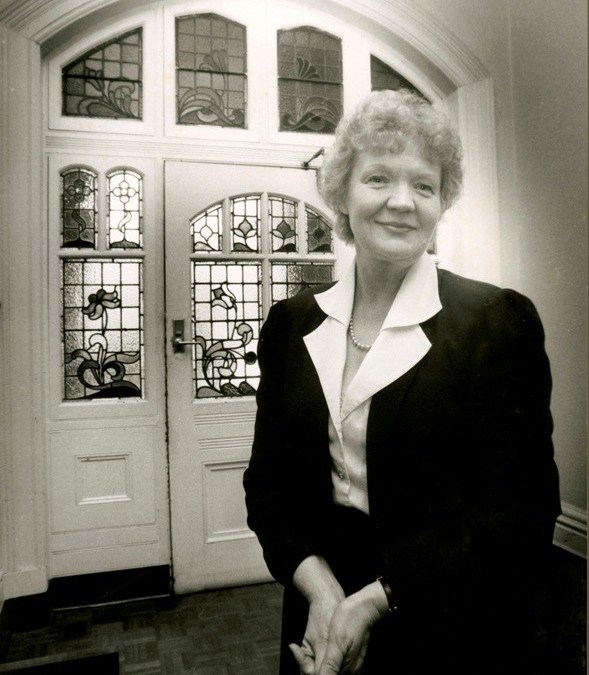 If you would like to encourage new writing talent and promote interest in garden history by donating to the Nina Crone Writing Fund, please click here for details.
If you would like to encourage new writing talent and promote interest in garden history by donating to the Nina Crone Writing Fund, please click here for details.
History of the Journal
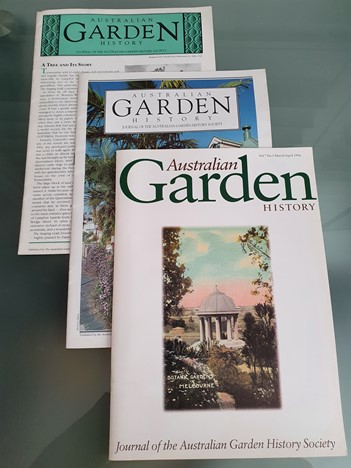 Nancy Clarke, AGHS ACT Monaro Riverina Branch, sets out the history of Australian Garden History in this paper,
Nancy Clarke, AGHS ACT Monaro Riverina Branch, sets out the history of Australian Garden History in this paper,
History of the Australian Garden History Society Journals.
Getting Published in the Journal
Guidelines for submission to Australian Garden History Journal
Copy deadlines for article submission to Australian Garden History Journal
| January issue | end of October |
|---|---|
| April issue | end of January |
| July issue | end of April |
| October issue | end of July |
Authors: please note that planning for future issues takes place well before these deadlines. You are advised to contact the editor as early as possible about your intention to submit.
Advertise in the Journal


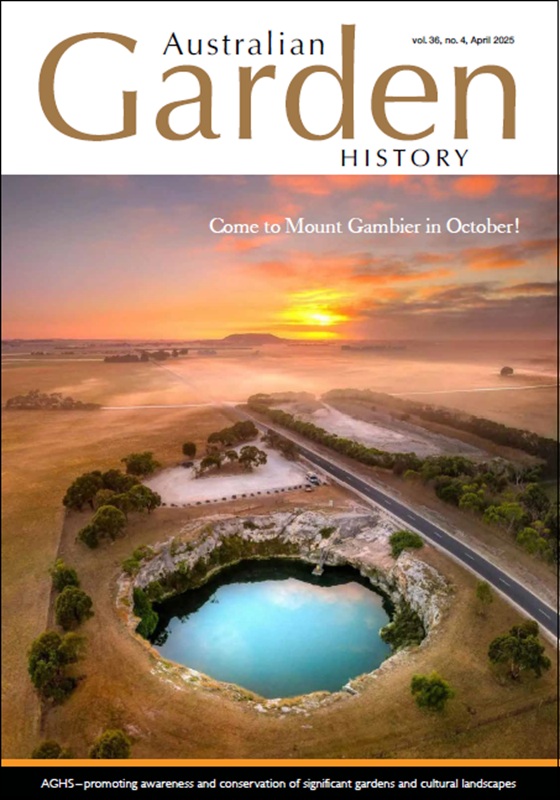
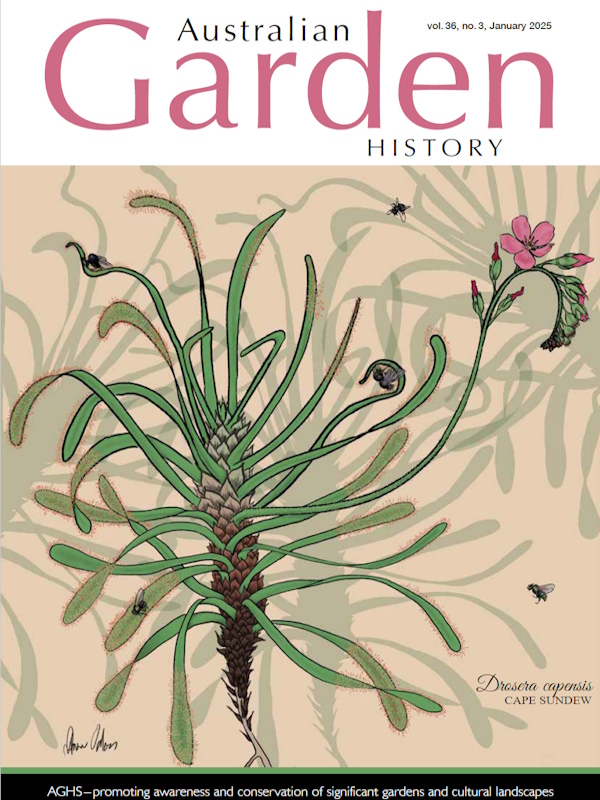
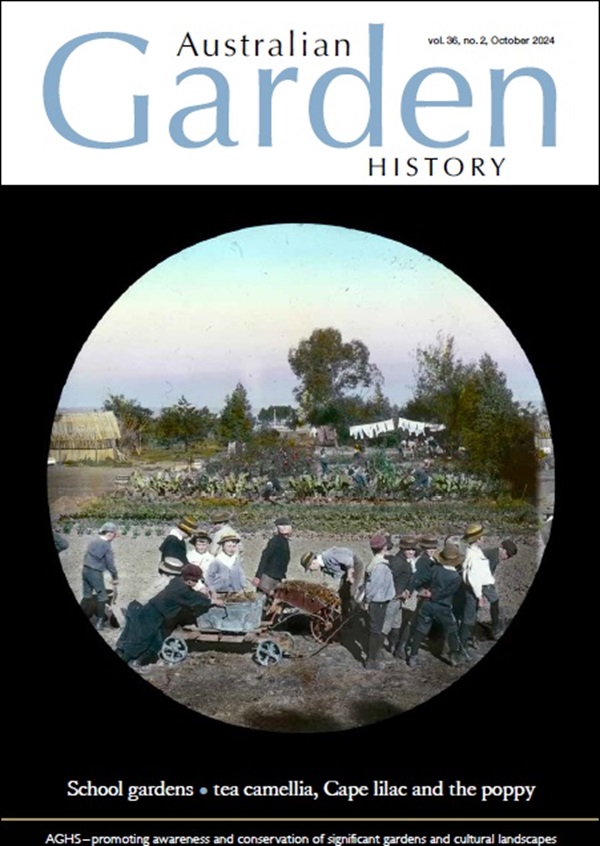
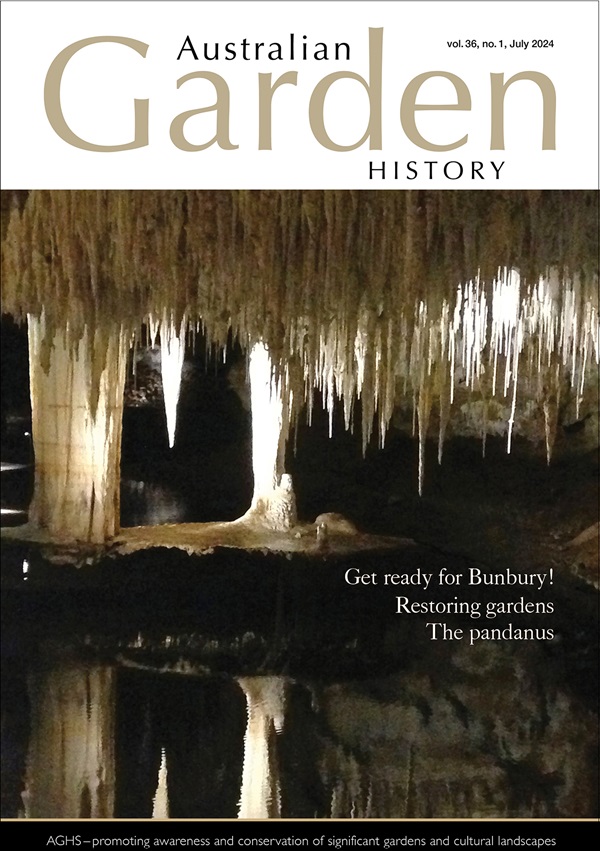
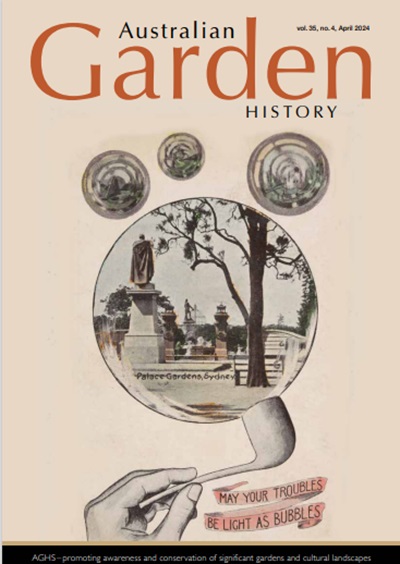
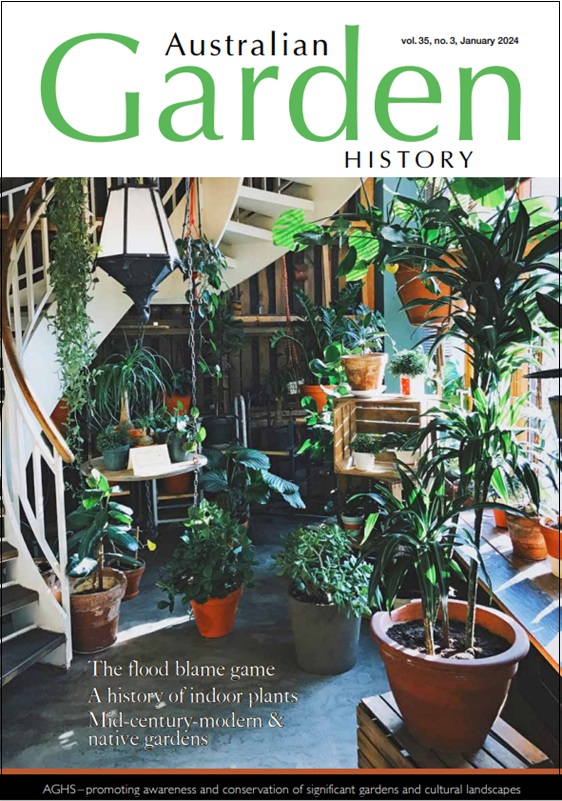
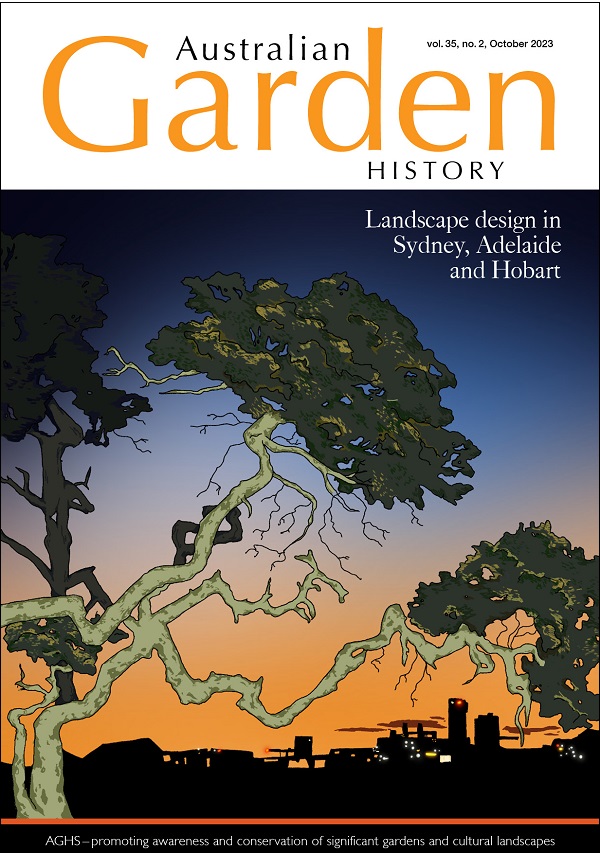
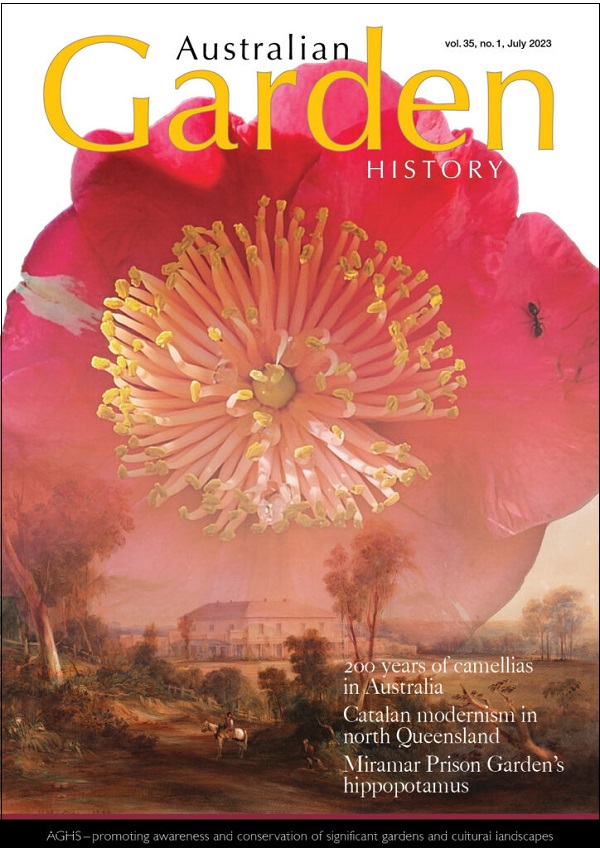
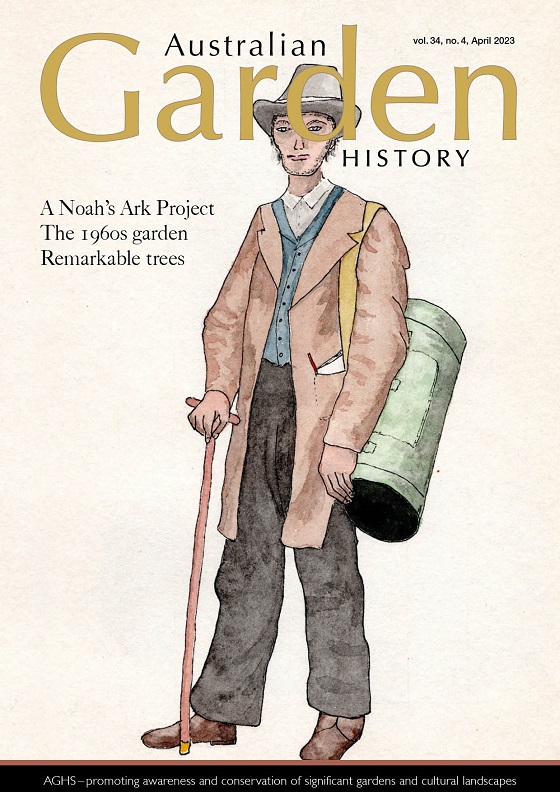
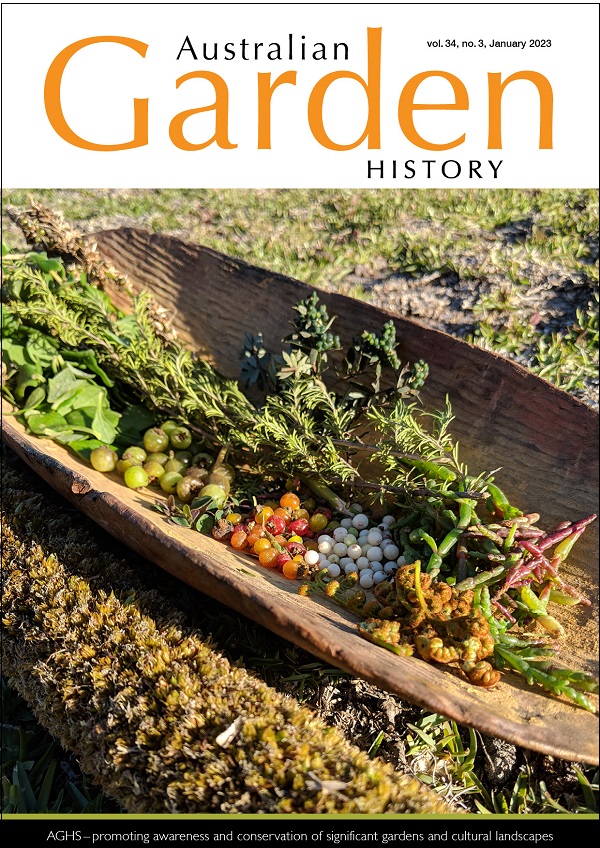
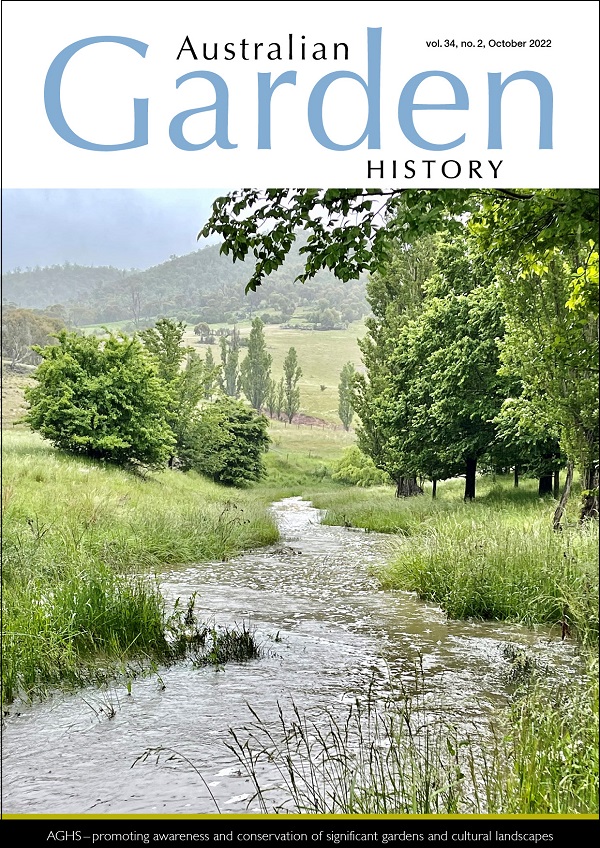
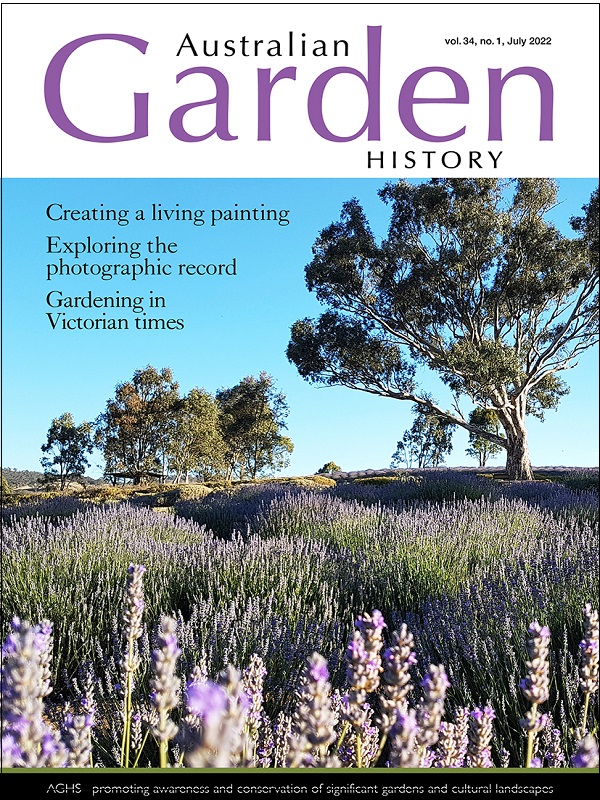
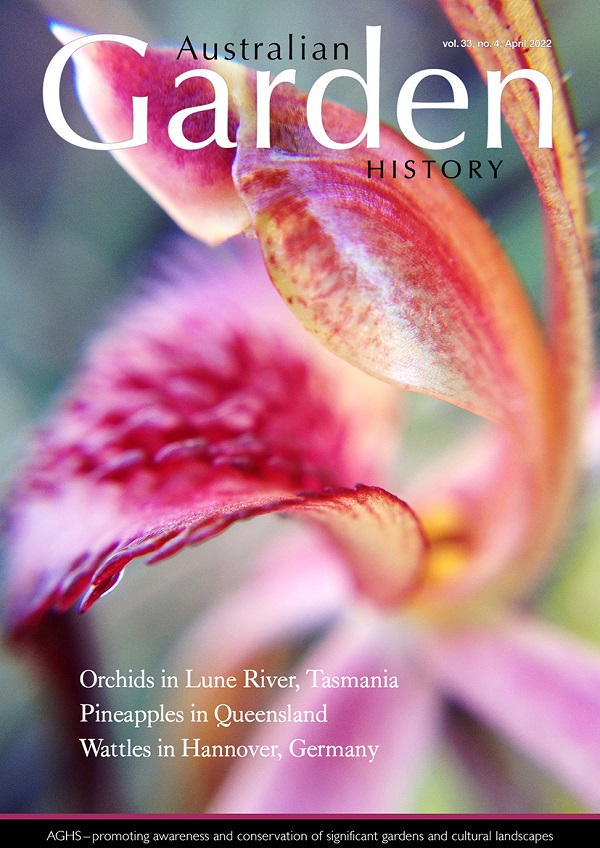
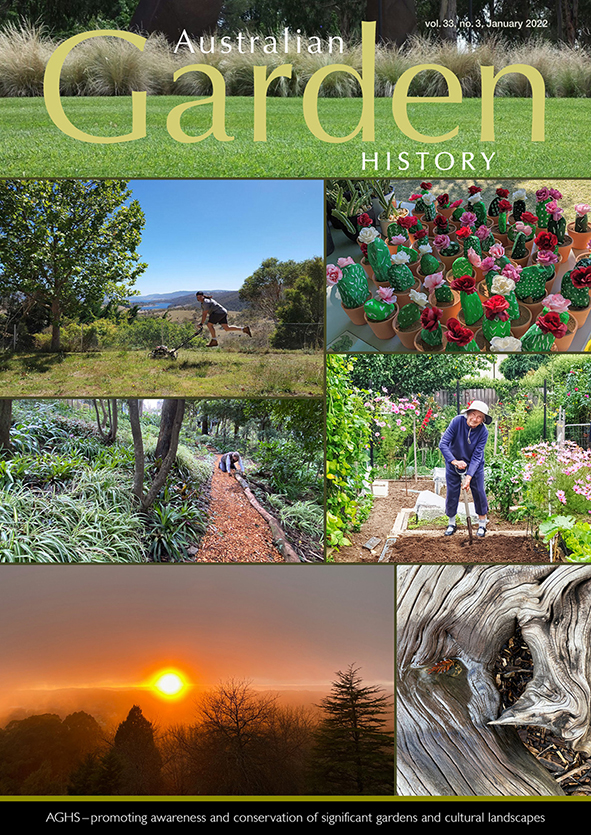
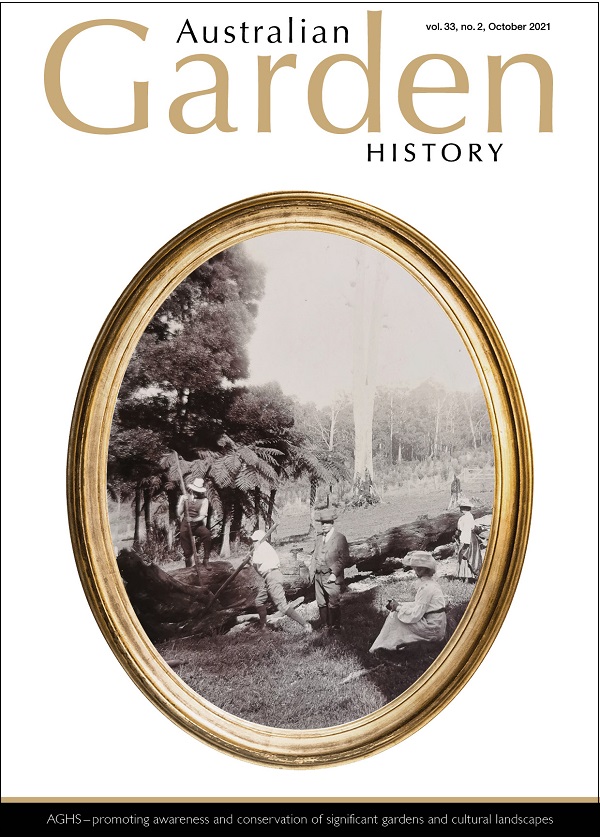
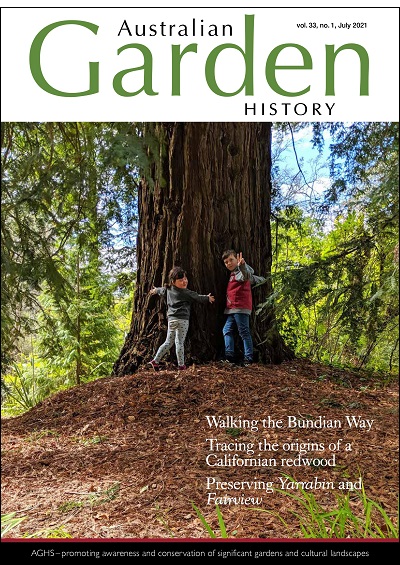
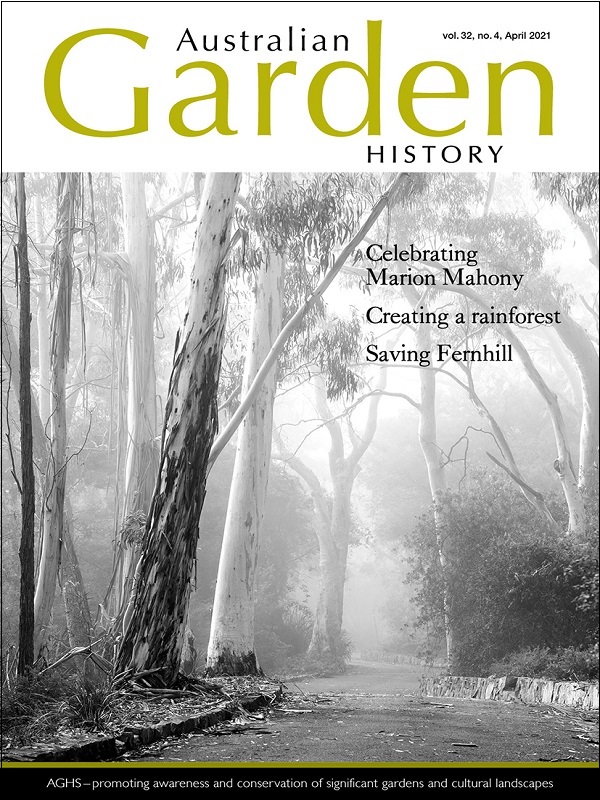
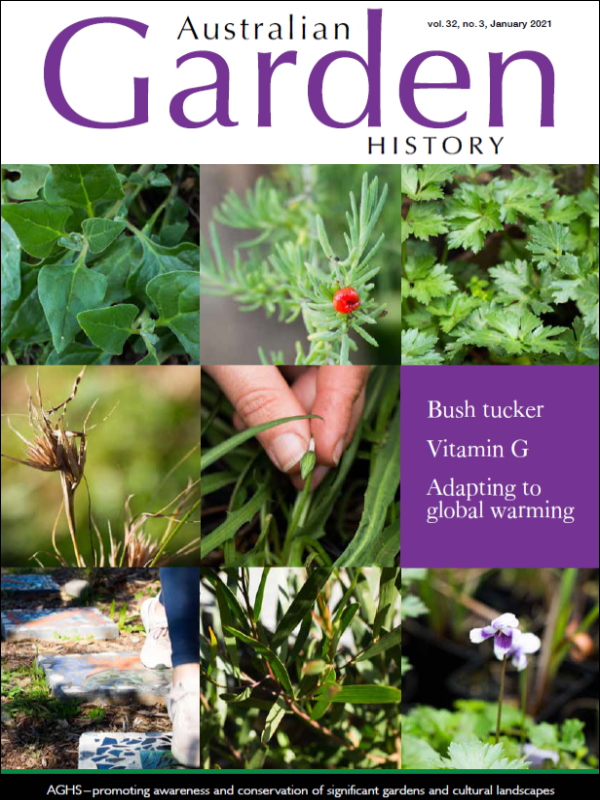
This Season
AGH Vol. 37 No. 2 October 2025
Contents
Memory and remembrance: The hidden power of plants Anne Claoue-Long
Memory is a key that unlocks meanings and beliefs that are otherwise concealed. It is the means by which the past can coexist with the present. Certain plants hold and trigger powerful memories about a diversity of experiences, beliefs and relationships, not only just about digging in the garden.
‘There’s rosemary that’s for remembrance’ John Dwyer
Rosemary (Salvia rosmarinus syn. Rosmarinus officinalis), grown in gardens for millennia as a herb or as a topiary plant, and often used in traditional medicine, has had strong cultural associations in remembrance and fidelity continuing to the present day.
Working memory: The evolving gardens of Abbotsford Convent Emma Sheppard-Simms
In 2024 the author was commissioned to design a memorial garden at Abbotsford Convent in Melbourne. Here she combines a historical account of that site from 1863 to today, with a personal narrative of creating the memorial garden in May 2025. This approach seeks to show how multiple perspectives and ideologies often intertwine within garden spaces, creating complex, and ever‑evolving, spaces of cultural memory.
The singular – Carnivore! Dot Evans
Do you remember the musical The Little Shop of Horrors about a man-eating plant, which demanded human blood or John Wyndham’s novel The Day of the Triffids? Could puya be the inspiration for the next scary movie?
John Oldham (1907–1999) and the ‘Lost Wellington Dam Precinct’ Greg Keighery and Bronwyn Keighery
John Oldham was a polymath: an artist, architect, communist, conservationist, landscaper and printer. Born at Subiaco, Perth in 1907. After completing high school, he became an architectural apprentice in the firm of Oldham and Boas, joining the firm in 1929. Later he embraced landscape architecture. His pioneering approach to public gardens and landscaping in Western Australia deserves much greater recognition.
Molly’s garden – Revealed in paintings Clare Gleeson
There is an oft quoted saying that a picture is worth a thousand words and nowhere is this more appropriate than in the representations of Molly Tripp’s garden, Silverton. The Canterbury garden, in New Zealand, was designed by renowned garden designer Alfred Buxton for Mary (Molly) and Mowbray John (Jack) Tripp.
For the bookshelf: The Sceptical Botanist: Separating Fact from Fiction by Tim Entwisle. Reviewed by Nancy Clarke
The book’s subtitle gives a clue to its purpose: to review and comment on scientific and popular thinking on a wide range of botanical matters currently in the public eye. the book is a joyful plum pudding, full of rich treats.
For the bookshelf: ‘I buy this piece of ground here’: An Italian Market-gardener Community in Adelaide by Madeleine Regan. Reviewed by Helen Armstrong
‘I buy this piece of ground here’ is a story about an Italian market gardening community in Adelaide who came from the Veneto region in northern Italy in the 1920s. It is an interesting addition to the stories about Italian migration to Australia.
The man who planted Canberra Robert Macklin
In May 1913, the English-born horticulturist Charles Weston was made officer-in charge of afforestation, Canberra, the site of the nation’s new capital city. Robert Macklin’s biography draws on the work of Dr John Gray, another significant contributor to Canberra’s treescape, who died in 2023. This project was supported by the AGHS’s Kindred Spirits Fund. Here, we join the story as Weston chooses a site for his experimental nursery.
Profile – Kindred Spirits Fund Colleen Morris, Peter Watts and Christina Dyson
In 1998 Joan Law Smith bequeathed her unpublished manuscript, Kindred Spirits – A Botanical Correspondence, to the Australian Garden History Society (AGHS). The proceeds from the sales of the book created a new fund, the Kindred Spirits Fund, to support special projects the Society would not otherwise be able to finance.
Managing historic gardens Stuart Read
Heritage is what we’d like to keep – but you can’t conserve what you don’t understand. Defining what matters, is ‘significant’, should be kept, is vital. As is what doesn’t matter, isn’t significant and can change: significance of layout, design elements, particular trees, a view or vista, details.
Good news – A garden saved: the revival of Wirra Willa Ursula Sharman
Wirra Willa, nestled in the foothills of the Darling Ranges in Armadale, Perth, a 1.5 ha heritage‑listed garden has been pulled back from the brink of neglect and given a new lease of life. Once overrun and almost forgotten, it now stands as a remarkable success story that highlights community vision, horticultural skill and sheer perseverance. The Australian
Garden History Society has played a significant part.
AGHS national oral history collection: Juliet Ramsay
A brief profile of AGHS member Juliet Ramsay drawn from an interview recorded for the AGHS national oral history collection.
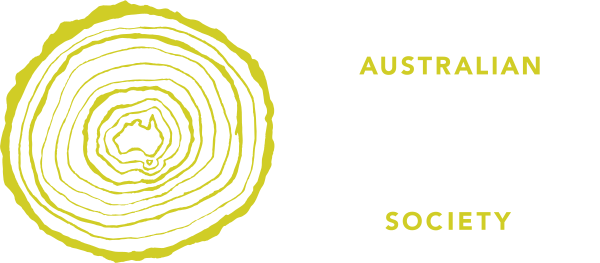
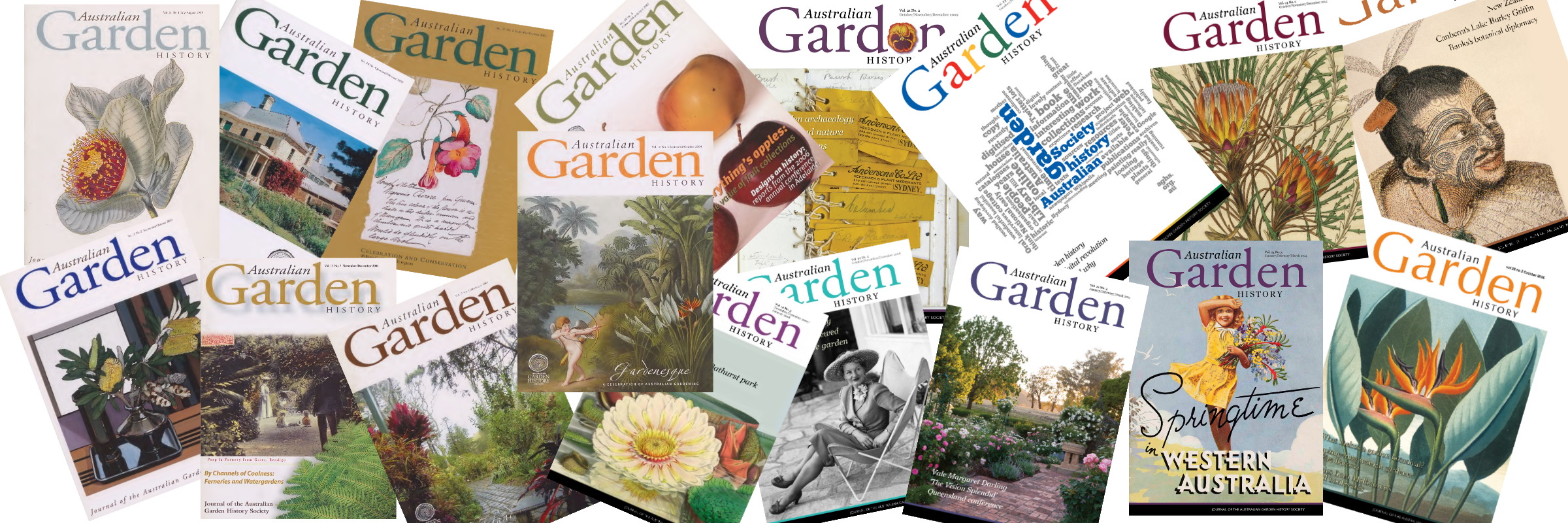
Leave a Reply
You must be logged in as a member to post a comment.